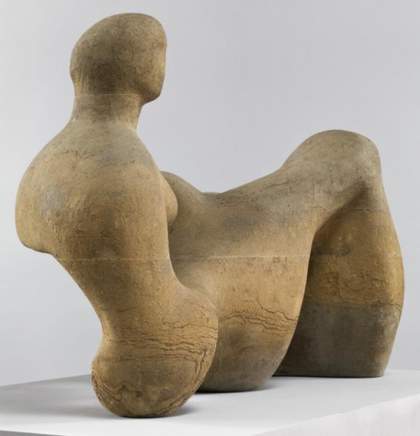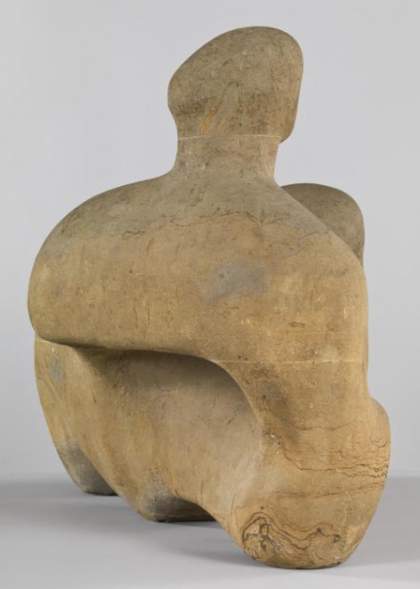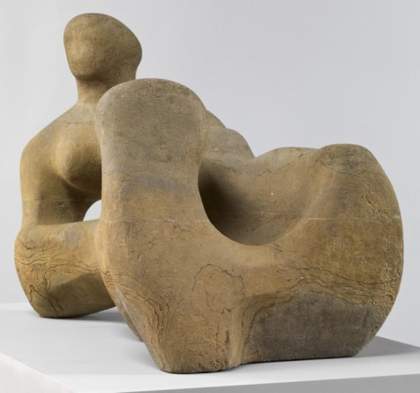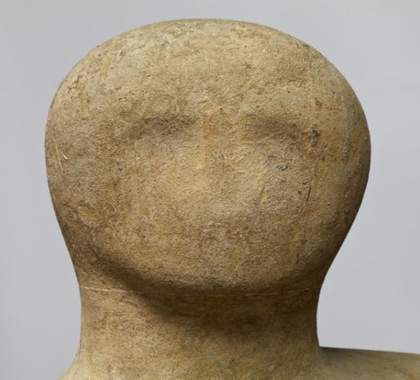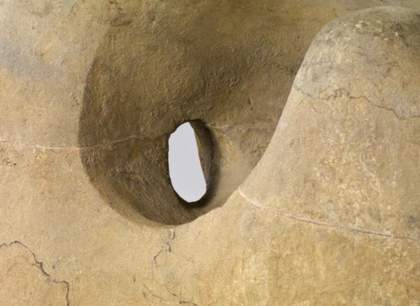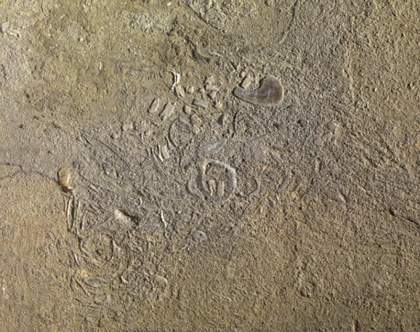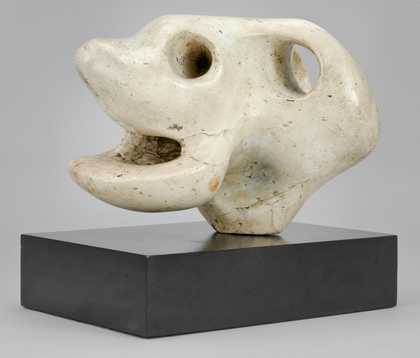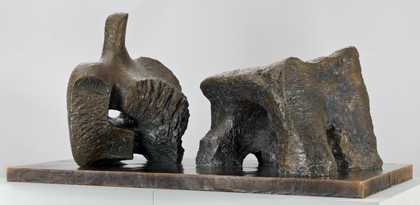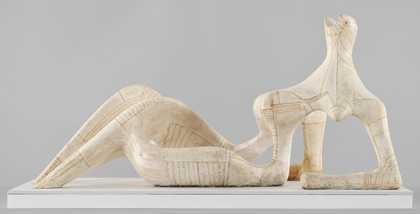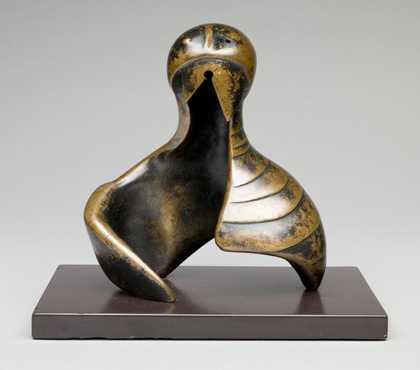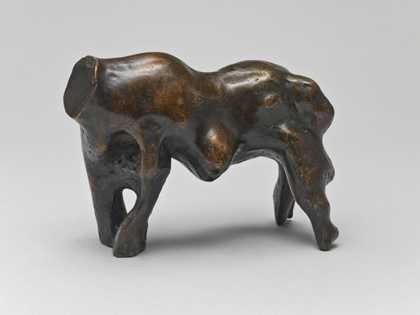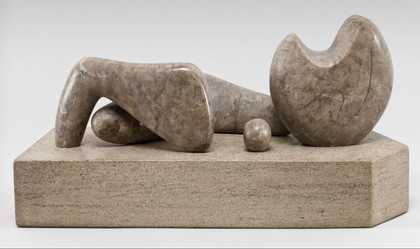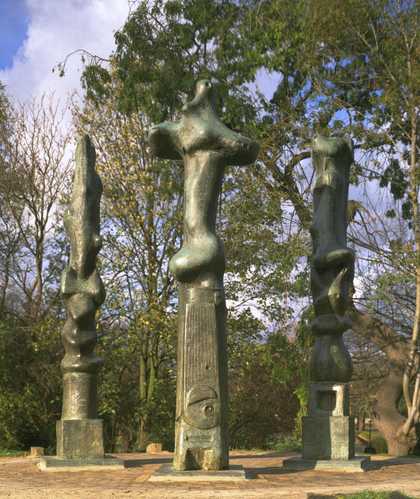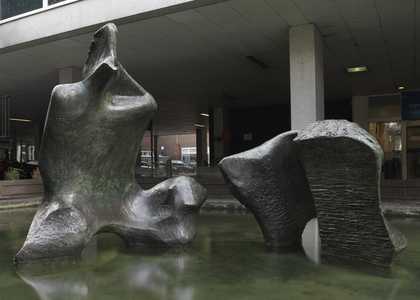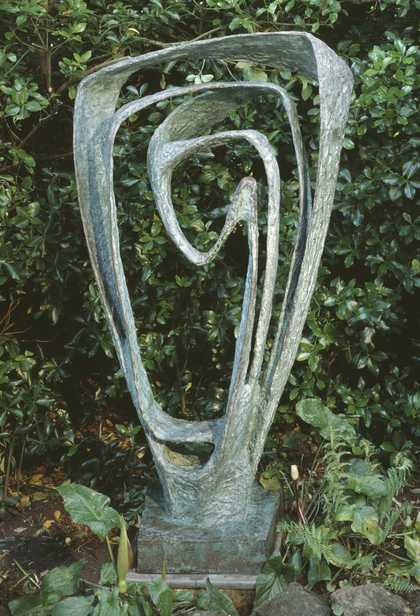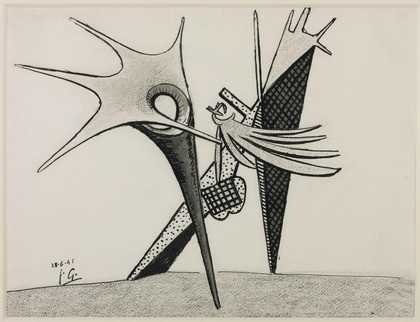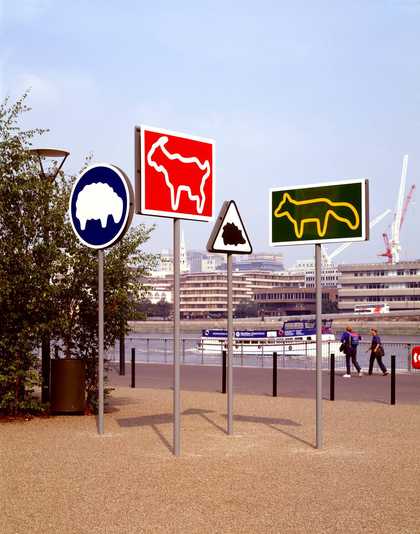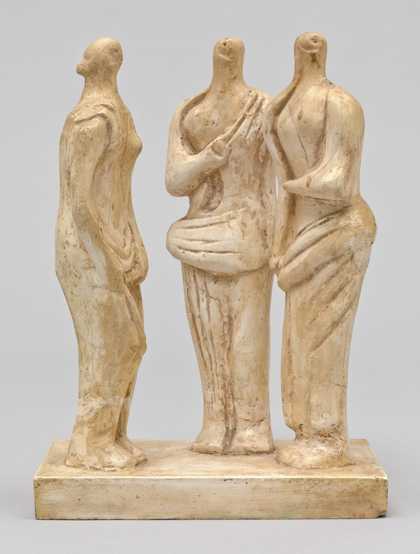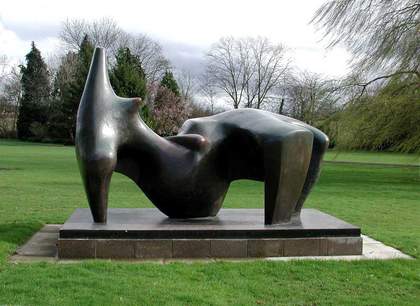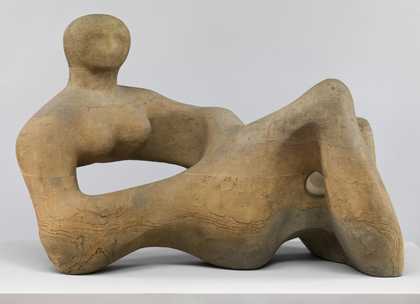
Henry Moore OM, CH
Recumbent Figure (1938)
Tate
Introduction
Henry Moore created this sculpture Recumbent Figure in 1938. The sculpture is of a woman lying down. You may be able to make out knees, breasts and a head, but the forms have been simplified and the figure looks abstract.
Take a look at the slideshow below to explore the sculpture more closely from different angles and viewpoints. Look at the shapes and forms of the sculpture and think about what remind you of. Also try and imagine that you are looking at the sculpture for the first time and know nothing about it. Does it look like an ancient object or a modern object?
Henry Moore carved Recumbent Figure from a huge block of Green Hornton stone which came from a quarry in Oxfordshire. If you look closely you can see tiny fossils on its surface which help to give the sculpture its rich, rough texture. Its undulating shape makes it look a bit like a landscape. Although it was made in 1938 and is a work of modern art, Its simple, powerful form suggests an ancient object.
What was he thinking?
Henry Moore’s sculptures might look very different to other sculptures of people you have seen. Compare Henry Moore's sculpture of a head with a sculpture created around the same time by artist Maurice Lambert.
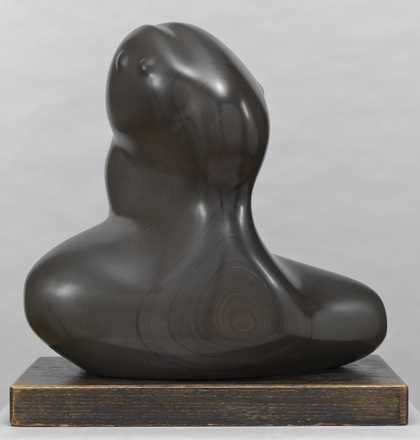
Henry Moore OM, CH
Composition (1932)
Tate
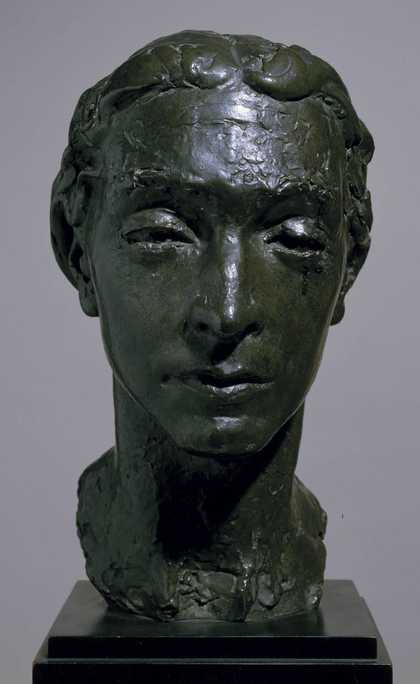
Maurice Lambert
Head of a Woman (exhibited 1938)
Tate
Although Maurice Lambert has expressively moulded the delicate features of his portrait head, it is a more straight forward and realistic depiction. Henry Moore's head has been simplified so there are no obvious features and the head and shoulders melt into a single organic form.
What Inspired him?
This photograph shows Henry Moore's studio at his house, Hoglands in Hertfordshire, as it was left when he died in 1986. Among all the sculptures (and bits of sculpture), furniture and boxes there are some clues as to what inspired him.

Henry Moore's maquette studio at Hoglands, Hertfordshire, as he left it on his death in 1986
Photograph by John Hedgecoe
Bones and skulls
Bones are the inside structure that nature uses for both lightness and strength…so in bones you can find the principles which can be very important in sculpture
Henry Moore
If you visited Henry Moore in his studio you might have seen him examining bones and skulls (including a huge elephant skull) to get ideas for his sculptures.
Take a look at the slideshow below. Can you see how the shapes of these sculptures might have been inspired by bones and skulls?
Rocks, stones, shells and wood
Like many of us, Henry Moore would pick up interesting stones, shells and sticks when he went for walks in the countryside. He took these back to his studio and used their shapes and textures to inspire the shapes and textures of his sculptures. He said:
I have found the principles of form and rhythm from the study of natural objects…pebbles and rocks show nature’s way of working stone
The organic shapes of the sculptures in the slideshow below, look as if they have been inspired by found natural objects. Can you see one that reminds you of: Smooth pebbles you might find on a beach? A twisted stick or tree root? A broken seashell? A rough chunk of rock?
Shapes in the landscape
In Yorkshire, in Adele Woods just outside Leeds, there was a big rock amongst many that I called Adele Rock. That influenced me quite a bit. For me, it was the first big bleak lump of stone set in the landscape surrounded by marvelous gnarled prehistoric trees. It had no feature of recognition; no copying of nature – just a bleak powerful form. Very impressive.
Henry Moore
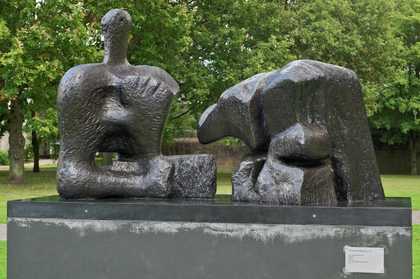
Henry Moore OM, CH
Two Piece Reclining Figure No.3 (1961, cast date unknown)
Tate
As well as taking inspiration from the shapes of natural objects, Henry Moore was also inspired by the landscape itself. The dramatic features of Yorkshire countryside near where he lived as a child, were an early inspiration.
Look at the sculpture shown above. It is another reclining figure, but the separate pieces that make up the sculpture do not look like parts of the human body. The bent knees look like a craggy cliff and the body looks a bit like a cave in a hillside. Even the head could be a tree on top of a round hill. But arranged together, they look like a figure lying down. In this way Henry Moore found a way of linking the human body with the landscape.
Not only did he take inspiration from the landscape, Henry Moore made many of his sculptures for landscape settings. He felt that the natural features of the landscape would set off how his sculptures are seen. Although it is now generally seen in a gallery – at Tate Britain – Recumbent Figure 1938 was commissioned for the terrace of a modernist house in the Sussex countryside. The sculpture would be seen alongside the rolling hills of the South Downs (a large area of beautiful countryside in the South of England). The curving shape of the figure echoed the rolling shape of hills. Henry Moore said, ‘my figure looked out across a great sweep of the Downs and her gaze gathered in the horizon...it became a mediator between modern house and ageless land'.
Sculptures from other times, cultures and countries
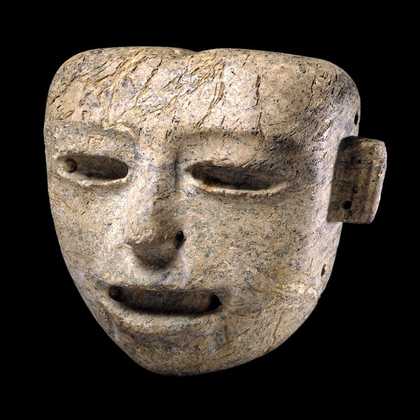
Stone mask
Teotihuacan culture (150 BC – AD 700) from Mexico
© Trustees of the British Museum

Henry Moore OM, CH
Mask (?1928)
Tate
In 1921 Henry Moore moved to London to study at the Royal Academy of Art. He visited the British Museum and was inspired by sculptures from Ancient Egypt, Africa and Mexico he saw there. These bold sculptures were not trying to be real depictions of people and were very different to the realistic sculptures he had studied at art school. He spent hours in the museum drawing the sculptures, and used the drawings to get ideas for his sculptures. He said: 'You can learn the history of art from the British Museum…by looking at what has been done in the past, what other people have done to point the way'.
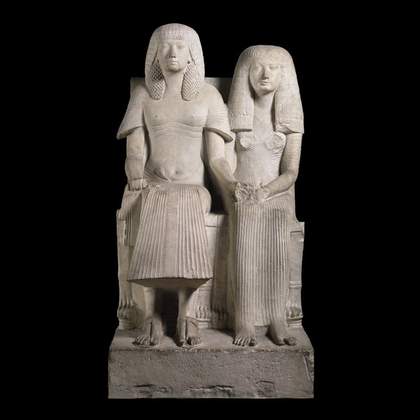
Limestone statue of a husband and wife
From Egypt, 18th or 19th Dynasty, around 1300 BC
© Trustees of the British Museum
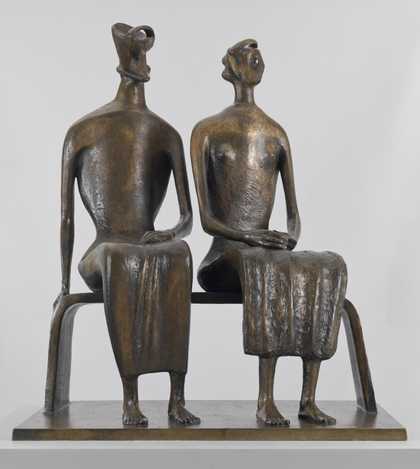
Henry Moore OM, CH
King and Queen (1952–3, cast 1957)
Tate
Drawing: From idea to finished sculpture
My drawings are done mainly as a help towards making sculpture…as a way of sorting out ideas and developing them
Henry Moore
Artists often use drawings to develop their ideas. Henry Moore used drawing to work out how to transform the shapes of objects that inspired him into the strange and beautiful shapes for his sculptures. In this drawing you can see him transforming the shapes of rocks and stones into figures.
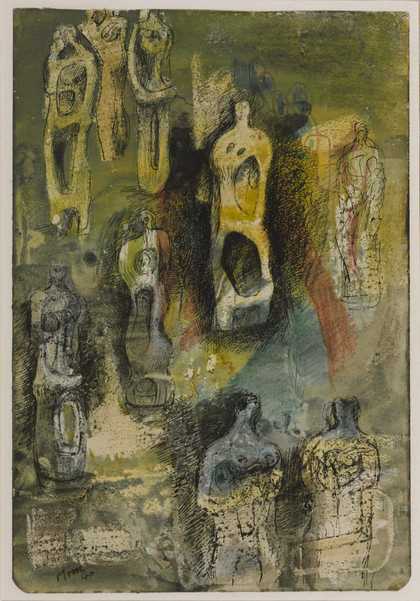
Henry Moore OM, CH
Standing Figures (1940)
Tate
Inside and out
From the 1930s, Henry Moore began to make sculptures that explored both the inside and outside of objects. The sculptures are quite complicated, but by using drawing he could work out his ideas and how he could make the sculptures work, before actually creating them.
This drawing of an oval form shows an outside shape and also a more complicated inside shape (which he has drawn using thick black lines).
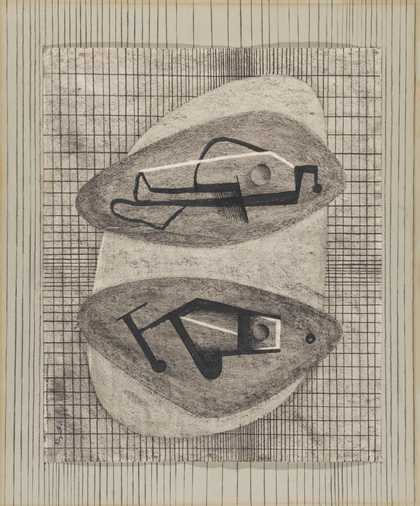
Henry Moore OM, CH
Drawing (1935)
Tate
What do you think?
Sculpture is an art of the open air. Daylight, sunlight is necessary to it…I would rather have a piece of my sculpture put in a landscape, almost any landscape, than in or on the most beautiful building I know.
Henry Moore
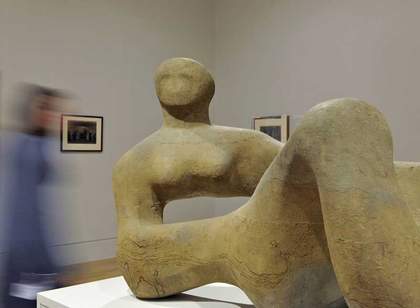
Viewers in Henry Moore exhibition, Tate Britain, Spring 2010
Tate © The Henry Moore Foundation. All Rights Reserved, DACS 2011
Although Henry Moore made Recumbent Figure 1938 for an outdoor location, it is now displayed inside a gallery at Tate Britain:
- What difference would it make if the sculpture was surrounded by hills, trees and plants rather than the white walls of a gallery space?
- How would a big open space with no walls change how the sculpture looks?
- In a gallery artworks are carefully lit with artificial spotlights. What difference would daylight make?
- How do you think the weather would affect the sculpture?
- How would it look in different types of weather or in different seasons?
Have a go: Design an outdoor sculpture
Henry Moore made many of his sculptures for outdoor locations, intending that the natural elements and forms of nature would complement how the sculpture is seen. Have a go at designing a sculptue for an outdoor space near where you live. (This could be a park, a shopping precinct or a countryside or seaside location).
Tips to help you get started:
- Think about the size and nature of your chosen location. If it is a small space, the sculpture will need to be on a smaller scale. Do lots of people use or pass through the location? How might this affect the type of sculpture you design? If the site you have chosen is a large space which can be seen from a long way away (a hill in a park for example), think about how you can maximise the drama of this location in your design
- Photograph and make sketches of your chosen location, documenting the shapes, textures and colours you can see there. As well as natural shapes (hills, rocks, trees, plants); there may be man-made, structures (buildings, paving-stones, fences). Use these to inspire the shape, texture and colour of your sculpture.
- Henry Moore used stone or bronze as materials for his outdoor sculptures so that they would survive the effects of the weather. Can you think of other materials that are suitable for an outdoor location? What material would you use for your sculpture?
- Often artists who make sculptures for an outdoor setting will add holes or reflective surfaces to frame or reflect the environment. Barbara Hepworth often did this with her work. Is this a feature you could use in your design?
- Sketch your sculpture idea. Add notes outlining its size and what it will be made out of. You could also make a maquette of your sculpture from plasticine or clay. (A maquette is a small study that artists sometimes make to plan their work).
The sculptures in the slideshow above by Henry Moore and other artists in Tate's collection, may give you some ideas.
Have a go: Make a temporary sculpture inspired by landscape
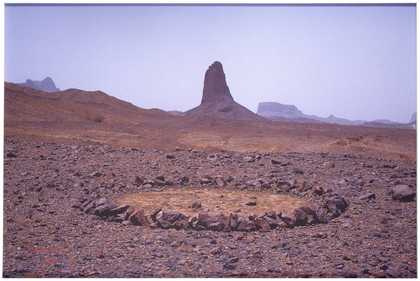
Richard Long CBE
Sahara Circle (1988)
Tate
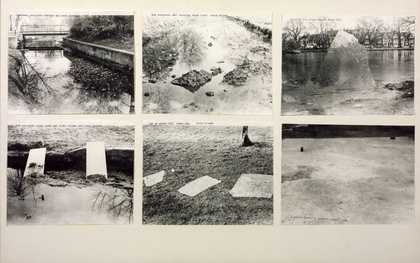
Bruce McLean
Six Sculptures (1967–8)
Tate
Henry Moore planned his outdoor sculptures to be permanent. But some artists create temporary sculptures in landscapes. The sculptures are often made from natural materials found in the location they are created in. They are designed to reflect landscape features and also to reflect our interactions with the landscape.
To make his artwork A Sculpture Left by the Tide, Richard Long used seaweed washed up by the sea to create a spiral sculpture on the beach. For Sahara Circle he cleared broken stones from a patch of desert revealing a lighter softer surface underneath. He then used the stones to make a circle around this patch of cleared ground to create a temporary sculpture that reflects the circular forms of the stones, and the textures and colours of the landscape. Artists Andy Goldsworthy and Bruce McLean have used leaves, twigs and even ice and snow to create temporary fragile sculptures. These are soon destroyed by the elements and the only record of these sculptures are photographs taken by the artist to document them.
Have a go! These tips may help:
- If you have a garden or outdoor space near you, you could try creating a temporary sculpture in the landscape using things you find there
- Your sculpture could be a shape on the ground, or you could pile or stand twigs or stones to create a simple standing structure. You could also try weaving natural materials such as grasses, twigs or reeds together to form simple natural structures
- Photograph your temporary sculpture to record it.

